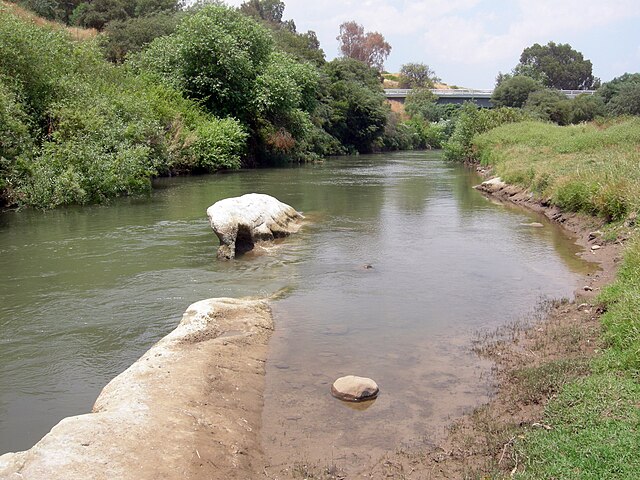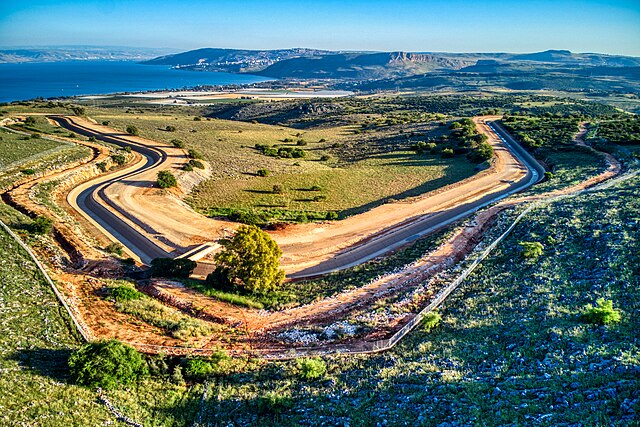Water politics in the Middle East
Water politics in the Middle East deals with control of the water resources of the Middle East, an arid region where issues of the use, supply, control, and allocation of water are of central economic importance. Politically contested watersheds include the Tigris–Euphrates river system which drains to the south-east through Iraq into the Persian Gulf, the Nile basin which drains northward through Egypt into the eastern Mediterranean Sea, and the Jordan River basin which flows into the Dead Sea, a land-locked and highly saline sea bordered by Jordan to the east and Israel to the west.
Banias waterfall, Golan Heights
Nile River, Egypt
Jordan River near B'not Yaakov bridge, Israel
Flood waters exiting from the Yarmuk reservoir to the Yarmuk river, 1933
National Water Carrier of Israel
The National Water Carrier of Israel is the largest water project in Israel, completed in 1964. Its main purpose is to transfer water from the Sea of Galilee in the north of the country to the highly populated center and the arid south and to enable efficient use of water and regulation of the water supply in the country. It is about 130 kilometers (81 mi) long. Up to 72,000 cubic meters of water can flow through the carrier each hour, totalling 1.7 million cubic meters in a day.
The Hukok Canal, an open canal of the National Water Carrier
Water flows from the pressure pipe above the Sea of Galilee into the Hukok open canal
Water flows from the Hukok open canal into the inverted siphon in Nahal Amud
The inverted siphon in Nahal Amud








